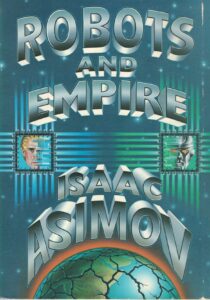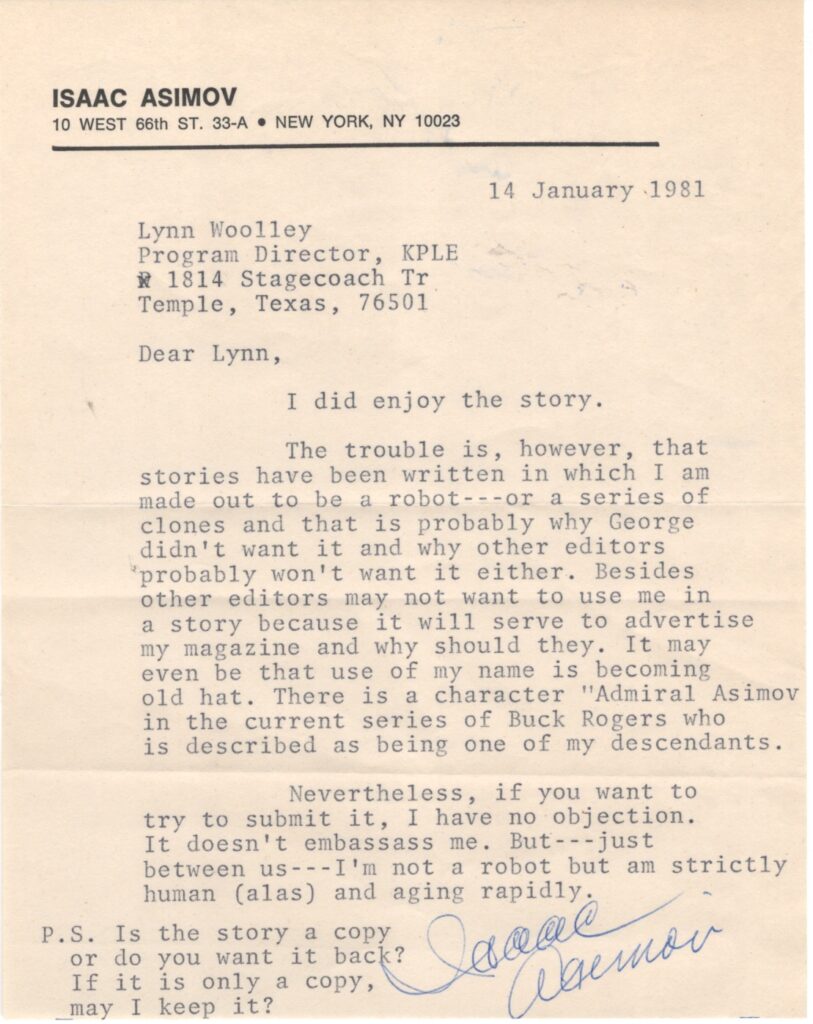Could a Robot Become President of the United States?
Well, we’d have to tweak the Constitution just a bit.
But yes, having a robot in the Oval Office would solve a lot of problems.
The Left hates the bombastic style of President Trump, and the Right is convinced that President Biden was senile. Now imagine a president that doesn’t go to bed at four in the afternoon, or insult his adversaries. But beyond that, a powerful, and politically neutral AI, in a humaniform body would work 24 hours a day without salary.
He or she, depending on the assignment of pronouns, would have instant access to all known data including economics, foreign affairs, science, religion, and the whims of both parties. Decisions could be made in nano-seconds.
Ask yourself this: Would a sentient robot have opened the southern border? Would it raise tariffs?
AUDIO: Random Samplings of a Logical Mind
Here’s my proposed 28th Amendment to the United States Constitution:
An artificial intelligence (AI) housed in a humaniform mechanical body may serve as President of the United States after being operational in high-level government activities for a period of at least ten years, and whose programming updates are continuous, and whose political biases are carefully controlled by the Laws of Robotics which shall be administered by the Congress and may be revised as necessary by the House of Representatives with advice and consent of the United States Senate.
Don’t even try to diagram that sentence. It’s just a government-speak amendment to allow Congress to create a pathway to conduct this admittedly dangerous but potentially beneficial experiment. But robots will become our masters, you say! That’s why we need the Laws of Robotics. The writer and scientist Isaac Asimov was the first to conceive of such a thing. His Three Laws of Robotics are as follows:
A robot may not injure a human being or, through inaction, allow a human being to come to harm.
A robot must obey orders given it by human beings except where such orders would conflict with the First Law.
A robot must protect its own existence as long as such protection does not conflict with the First or Second Law.
Asimov saw robots as being servants to humans, but with the ability to develop human emotions. His many novels and short stories about robots envision metal bodies simulating the human form and containing a “positronic brain” that is embedded with the three laws. A robot in his universe simply could not harm a human being.
I will point out that I communicated briefly with Asimov after I had written a short story in which Asimov himself turned out be a robot. The Three Laws of Robotics were a major plot point in my story, and Asimov, saying that no magazine would take it, sent me a letter of permission. Fortunately, he was wrong about that. A small magazine called Shadows Of… bought the story, and I included it in my collection The Clock Tower and Other Stories.
Asimov, who created one of the great robots in fiction which we’ll discuss later, died in 1992 without seeing many of the advances in artificial intelligence, digital platforms, and cellular technology that are commonplace today. It’s my guess that he wrote all his stories on a typewriter. Were he alive today, he would be astonished to see how many elements of his stories have come true.
Asimov might see a need for a new set of laws, based on the 28th Amendment. These laws would set the rules for a robot chief executive with safeguards and standards, and yet would need to be flexible enough to allow the ROPUS (Robot President of the United States) to make quick and correct decisions. Here are a few examples:
A robot president must never do anything that would harm the United States of America or its people, or through inaction, allow America to be harmed.
A robot president must consider advice given it by the Congress, and may adhere or reject such advice unless two-thirds of both Houses concur, and then the president must adhere.
A robot president may take swift action to defend the United States against foreign attack whether physical or cyber in nature, but must not go to war without the approval of the Congress.
These and other such laws would be embedded in the AI without any ability to overrule.
What’s the advantage of the ROPUS over a standard POTUS?
The AI president would have instant knowledge of all data from the Intelligence Community, monitoring of all foreign broadcasts and the internet – it would know literally everything, including past history and what has worked and not worked. It could instantaneously create a plan – likely the best plan – for fending off an enemy, or even conducting a defensive strike such as taking out the Iranian nuclear sites.
Here at home, the president would be the world’s most informed expert on the economy. It would be able to accurately predict the effects of tariffs, interest rates, and spending. It might even solve the crisis over the National Debt. It could look at climate change through an unbiased lens and tell us what we need to do – if anything.
RELATED: My amazing Star Wars Encounter with Leonard Nimoy
Robots we have known and loved.
The term “robot” was coined by Karel Capek in 1920 in a work entitled R.U.R. (Rossum’s Universal Robots). This is from Amazon:
Written in 1920, premiered in Prague in 1921, and first performed in New York in 1922—garnered worldwide acclaim for its author and popularized the word robot. Mass-produced as efficient laborers to serve man, Capek’s Robots are an android product—they remember everything but think of nothing new. But the Utopian life they provide ultimately lacks meaning, and the humans they serve stop reproducing. When the Robots revolt, killing all but one of their masters, they must strain to learn the secret of self-duplication. It is not until two Robots fall in love and are christened “Adam” and “Eve” by the last surviving human that Nature emerges triumphant.
Throughout science fiction, robots have been major characters in novels, short stories, and in the movies and television. Here are a few of the most famous:
GORT/GNUT: Gort is the scary robot that shoots laser beams from a single large eye if threatened. He appeared in the 1951 classic “The Day the Earth Stood Still,” which has always been and will always be my favorite movie of all time. In the film, Michael Rennie, as Klaatu, tells Patricia Neal the words she must speak to Gort to prevent him from destroying Earth: “Klaatu Barada Nikto.” Gort is the best fictional robot ever, but in the original short story by Harry Bates, entitled “Farewell to the Master,” his name was Gnut.
ROBBY THE ROBOT: Robby is a non-human style robot in the 1956 classic movie “Forbidden Planet,” providing some comedy relief. Robby was programed to obey Asimov’s Three Rules of Robotics, and that plays a part in the battle against the Monster from the ID that terrorizes the inhabitants of Altair IV. Leslie Nielsen stars as Commander John J. Adams in a film that set the stage for Star Trek. The movie is cerebral, timeless, and supremely entertaining.
ADAM LINK: This gets confusing, because this robot starred in a story entitled “I, Robot,” written by Eando Binder and published in Amazing Science Fiction in January, 1939. There is a collection by Asimov under that same title, which Asimov protested since the title had already been used. Adam Link was a mechanical man who became self-aware, and who starred in a series of ten short stories. Link was brought to television in 1964 in the “I, Robot,” episode of The Outer Limits. The 1995 revival of The Outer Limits featured the story again, and both versions had Leonard Nimoy in them. Eando Binder was the pen name of brothers Earl and Otto Binder.
R. DANEEL OLIVAW: First appearing in Asimov’s novel “The Caves of Steel,” Olivaw was said to be “indistinguishable” from humans. His positronic brain is governed by the the Three Laws. Olivaw is a detective who works with Elijah Baley (a human) to solve murder mysteries. Olivaw appeared in several other novels and stories. The initial “R” in the name stands for “robot.”
ENVIRONMENTAL CONTROL ROBOT: This is the unnamed robot from the kiddie series “Lost in Space” that gave us the catch-phrases “That does not compute,” and “Danger, Will Robinson.” The “Robot Model B-9, Class YM-3” often displayed human emotions and could sing and play guitar.
FROST: Frost is a sentient machine (AI in today’s terms), created by man, and still functioning generations after man has become extinct. Frost’s job is to monitor and take care of the Northern Hemisphere while the Beta Machine takes care of the Southern Hemisphere. Frost takes on a hobby – mankind – and works for more than a thousand years to become human. The story “For a Breath I Tarry” was written by Roger Zelazny and was published in 1966. It may be the best science fiction story ever written that featured no human characters.
ROBOTMAN: Robotman is a DC Comics superhero created by writer Arnold Drake who originally called him “Automaton.” Thinking that name was stupid, he changed it to Robotman. Drake may not have known that there was a Golden Age of Comics character by that same name first published in 1942. Both characters had human brains in mechanical bodies. Drake’s character, Cliff Steele, is a member of the Doom Patrol.
QUESTOR: Questor was an android created by Stark Trek’s Gene Roddenberry who appears in a made-for-TV movie, 1974’s The Questor Tapes, that served as a pilot. Robert Foxworth starred as Questor, who escapes from a lab with incomplete memory tapes and goes on a search for his creator. As with much of Roddenberry’s work, the single episode that was produced was intelligent and cerebral. Roddenberry clashed with NBC big-wigs and the series never developed. However, Roddenberry used a similar character when he brought Star Trek back to TV in the eighties.
LIEUTENANT COMMANDER DATA: Data first appeared in Star Trek: The Next Generation beginning in 1987, and has appeared in other series in the ST franchise. He is said to be sentient, self-aware, and “fully functional.” Actor Brent Spiner was to make Data more and more human as the series progressed. Spiner used the character of Robby from Forbidden Planet as a model, but he seemed more like Questor.
C3PO and R2-D2: Known as See-Threepio and Artoo-Detoo and called “droids,” they were keys to the popularity of the Star Wars franchise. C3PIO was portrayed as a “protocol droid,” while the squeaky but non-verbal R2-D2 gave us the holographic image of Princess Leia in the first Star Wars film saying “Help me Obi-Wan Kenobi. You’re my only hope.”
That’s a small sample of the robots we’ve known and loved, but there are many more.
Robots have come a long way.
We talk to Alexa and Siri. We marvel at how quickly they answer questions, researching and delivering our requested data almost instantaneously. And now we have the new AIs – ChatGPT and others that can bring Elvis back to life and create music, fiction, and essays. The question is: Can we make artificial intelligence – robots – that will serve mankind and make Earth a better and less warlike place? Would an advanced AI make a better president than humans?
The answer is likely yes.
Human presidents facing crisis bring in advisors to the Situation Room. They ask for reports and look at mountains of data. They hope they’re not missing anything – some element that could make a plan or an attack on an enemy go wrong. An AI would not need to do any of that. It could formulate complex plans, even multiple scenarios considering every iota of data that is known to exist. A robot president is not out of the question.
The question is this: would our robot president be smarter than Russia’s? Or China’s?
 Lynn Woolley is a Texas-based author, broadcaster, and songwriter. Follow his podcast at https://www.PlanetLogic.us. Check out his author’s page at https://www.Amazon.com/author/lynnwoolley.
Lynn Woolley is a Texas-based author, broadcaster, and songwriter. Follow his podcast at https://www.PlanetLogic.us. Check out his author’s page at https://www.Amazon.com/author/lynnwoolley.
Order books direct from Lynn at https://PlanetLogicPress.Square.Site. Email Lynn at lwoolley9189@gmail.com.
There is no robot in this book. Damn it, I knew I should have included a robot!



